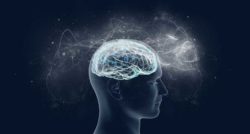Recent findings published by researchers from the University of Pittsburgh and Carnegie-Mellon University have shown that new brain activity patterns are formed when long-term learning takes place. The results of this research are significant, as they may help unravel solutions to improving the quality of life of individuals with brain damage by allowing an easier process of relearning tasks.
The project was conducted by using a brain-computer interface, which is able to create direct connections between a subject’s neural activity and movement of a computer cursor. The activity of approximately 90 neural units in the arm region of the primary motor cortex of rhesus monkeys was recorded, as they performed a task that involved moving a cursor to align with targets on the monitor. The recordings of new neural patterns were then compared with pre-existing neural patterns.
After one week, the researchers found that the subjects were able to learn how to control the cursor. Altered patterns of neural activity accompanied this learning. Aaron Batista, the principal investigator, states that, “This is striking because by construction, we knew from the outset that they did not have the neural activity patterns required to perform this skill.”
Researchers point out the possibility of this logic applying to anyone that is interested in learning a new skill – including individuals that have been paralyzed or have brain damage. The researchers involved in the study believe that in the future, they will be able to design neurofeedback strategies that can help further the process of new neural activity pattern formation.
Categorised in: Uncategorized
This post was written by Allison Wong
